Cichlids, belonging to the Cichlidae family, are native to Africa. The African cichlids are usually from Lake Tanganyika, Lake Malawi, and Lake Victoria. Featuring vibrant colors, elegance, and great adaptability, African cichlids have become one of the best freshwater fish for aquarists. Among the African cichlids, the largest cichlid is the Boulengerochromis microlepis, while the smallest one is shell dweller cichlids. In today’s article, let’s learn something about the smallest cichlid species – the shell dweller cichlid.
Content Table
Shell Dweller Cichlid Species
Shell dweller cichlids are from Lake Tanganyika. Most of them are in small sizes suitable for small aquariums. Generally, shell dweller cichlids live and even breed in the snails’ shells. In nature, they live in areas full of snails’ shells. Consequently, you should provide shells if you keep them in your fish tank.
In addition, though shell dweller cichlids are small, most of them are aggressive. Because they often compete for the shells. You can see only one cichlid or a pair of cichlids live in a shell. Also, while some of them are great diggers, most of them like sandy substrate. In short, sandy substrate and shells are of the essence in a shell dweller cichlid aquarium.
Usually, shell dweller cichlids include two genera – lamprologus, and neolamprologus. Then, we will list some small cichlid species of shell dwellers:
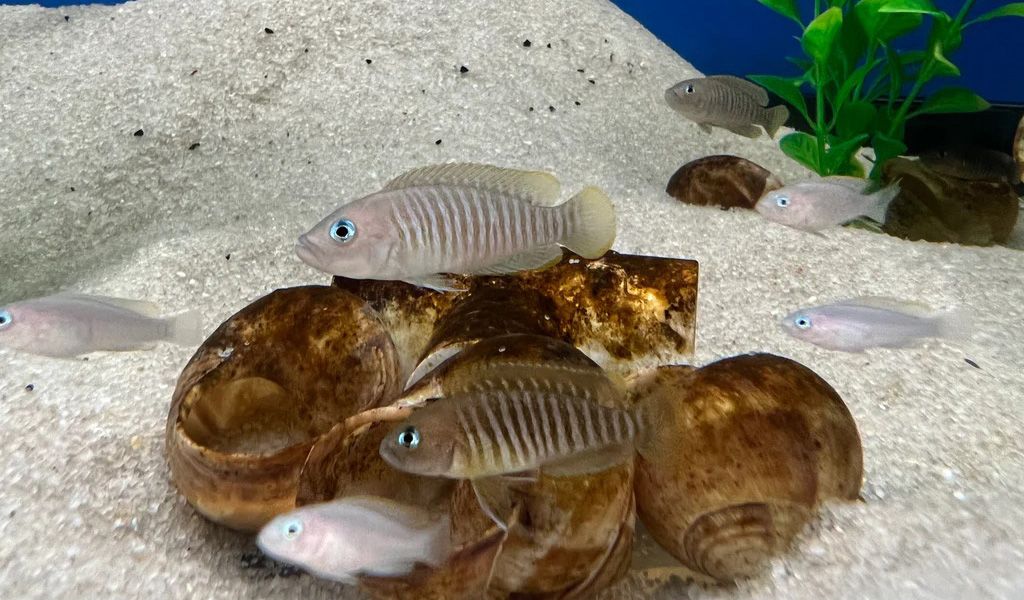
Lamprologus genus:
- Lamprologus ocellatus
- Lamprologus ocellatus gold
- Lamprologus meleagris
- Lamprologus calliurus
- Lamprologus speciosus
- Lamprologus ornatipinnis
- Lamprologus callipterus
Neolamprologus genus:
- Neolamprologus multifasciatus
- Neolamprologus similis
- Neolamprologus brevis
- Neolamprologus signatus
- Neolamprologus kungweensis
The Smallest Cichlid Fish
After learning something about shell dweller cichlids, this segment will share some features about these cichlid fish. Some cichlids are fond of living in groups, like Neolamprologus multifasciatus and Neolamprologus similis. The two are similar in appearance. Merely, the former has a lighter body color in comparison with the latter. On the contrary, there are also some cichlid fish enjoying living alone. For instance, Lamprologus ocellatus, Lamprologus ocellatus gold, and Lamprologus meleagris. Additionally, there are quite a few diggers. For example, Neolamprologus brevis, Neolamprologus kungweensis, and Neolamprologus signatus.
The Easiest Cichlid to Keep
As you can see in the previous segment, there are a great amount of shell dweller cichlid species. Can beginners keep a shell dweller cichlid? Exactly, yes. Neolamprologus multifasciatus is an ideal choice, which is native to Lake Tanganyika. It is the easiest and smallest cichlid to keep among the small cichlid species.
Neolamprologus multifasciatus possesses blue eyes and vertical strips on its body. Generally, its body is grayish purple. In aquariums, Neolamprologus multifasciatus is inactive and usually stays at the bottom of the tank. Compared to other shell-dweller cichlids, it is less aggressive. Moreover, the females are always smaller than the males.
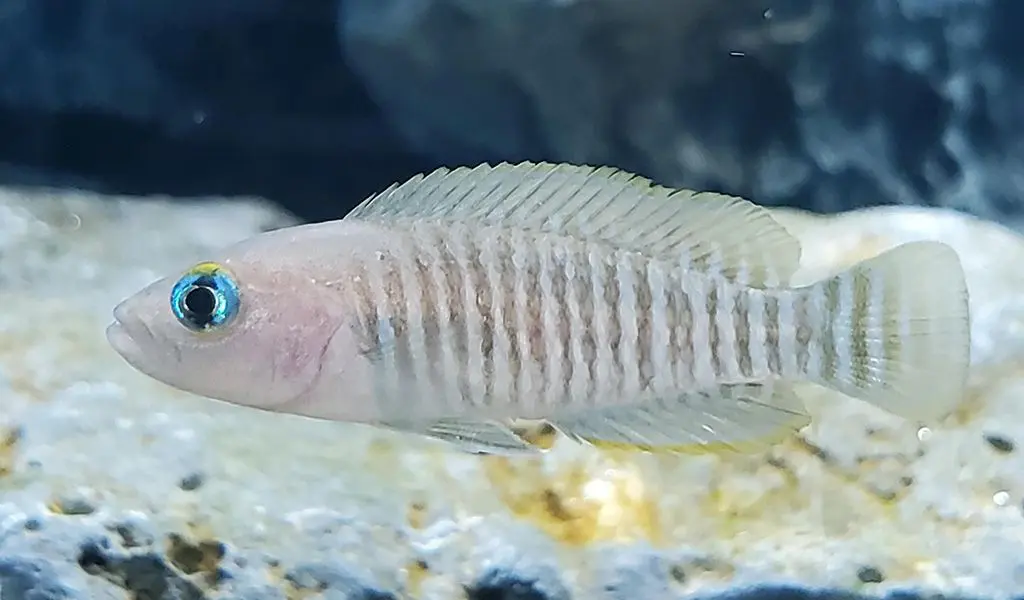
Furthermore, here is more additional info about Neolamprologus multifasciatus:
- Family: Cichlidae
- Scientific name: Neolamprologus multifasciatus/Lamprologus multifasciatus
- Common name: Many banded shell dweller/Multifasciatus dwarf cichlid/Multies
- Water temperature: 72-80℉
- pH level: 8.0-9.5
- Water hardness: 15-20 ° DGH
- Diet: Carnivore
- Size: 1.2-1.6 inches
- Lifespan: 5–7 years
- Minimum tank size: 10-20 gallon
- Substrate: sandy substrates with at least 2 inches deep
- Empty shells count: 1–2 shells per fish
- Aquarium air pump: Needed
- Aquarium filter: Needed
Cichlids Suited For a 10-gallon Tank
If you have a small tank, for example, an 8-gallon tank, 10-gallon tank, or 20-gallon tank. Keeping shell dweller cichlids would be an excellent idea. Then, what cichlids can be kept in a 10-gallon tank?
Lamprologus meleagris
With silvery blue spots on the body and fins, Lamprologus meleagris shines like a diamond. Females are smaller than males. However, the male one is more brilliant than the female one. Besides that, Lamprologus meleagris spends most of the time at the bottom of your fish tank. It prefers aquariums with sandy substrates, snail shells, and a great filtration system. Cichlid flakes, cichlid pellets, bloodworm, daphnia, and brine shrimp, are accepted. Generally, just feed them once or twice each day.
Sounds not bad? But in a small fish tank, you’d better keep one male with two or more females. Otherwise, dominant male lamprologus meleagris would attack other males. Additionally, here is more basic info about Lamprologus meleagris.
| Family | Cichlidae | 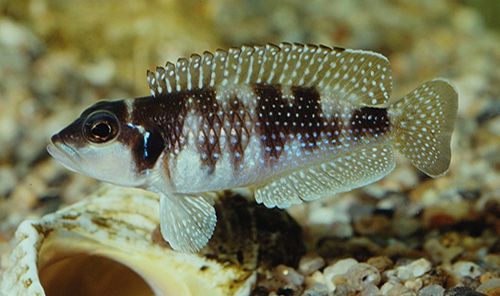 |
|
| Scientific name | Lamprologus meleagris | ||
| Common name | Pearly ocellatus /Meleagris shell dweller | ||
| Ideal water temperature | 75-82℉ | ||
| pH level | 7.8-8.5 | ||
| Diet | Carnivore | Lifespan |
4–8 years |
| Size | 2-2.5 inches | Minimum tank size |
10-15 gallon |
Neolamprologus brevis
Coming from Lake Tanganyika, Neolamprologus brevis has an upturned mouth and translucent fins. Also, its body color is light brown, while nine vertical strips are on the body. Usually, males are larger than females. You can keep the fish in pairs, and they will reproduce easily. Furthermore, the fish fancies digging the substrate. So the substrate in your tank should not be less than 2 inches deep. And the same as Lamprologus meleagris, feeding them once or twice a day is feasible.
| Family | Cichlidae | 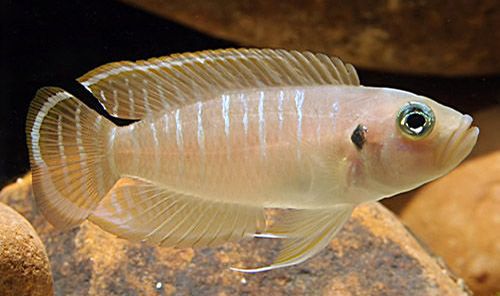 |
|
| Scientific name | Neolamprologus brevis | ||
| Common name | Brevis shell dweller /Sunspot brevis | ||
| Ideal water temperature | 73-77℉ | ||
| pH level | 8.0-9.0 | ||
| Diet | Omnivore | Lifespan |
5–8 years |
| Size | 1.5-2.5 inches | Minimum tank size |
10 gallons |
Neolamprologus similis
Neolamprologus similis is one popular freshwater fish from Lake Tanganyika in Africa. Featuring the copper body color and vertical white strips from the head to the tail, it can grow up to 2 inches. Male ones would develop a small nuchal hump when they are mature. But contrary to Neolamprologus brevis, it prefers shallow substrate.
| Family | Cichlidae | 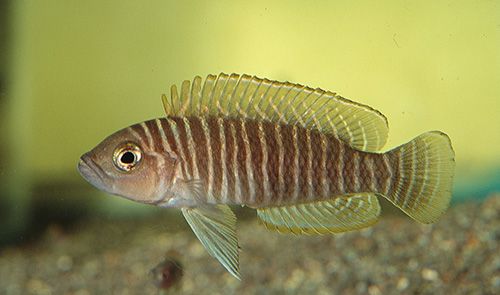 |
|
| Scientific name | Neolamprologus similis | ||
| Common name | Breitstreifen -Schneckenbuntbarsch | ||
| Ideal water temperature | 75-81℉ | ||
| pH level | 7.5-9.0 | ||
| Diet | Omnivore | Lifespan |
8–10 years |
| Size | 1.5-2 inches | Minimum tank size |
10 gallons |
That’s all for today. You can go to the cichlid global distribution topic to know more about the other popular types of cichlid.
Now, what type of shell dweller cichlid is in your tank? Don’t hesitate to share it in the comment here.
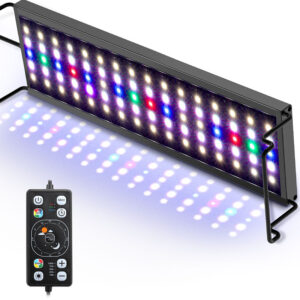
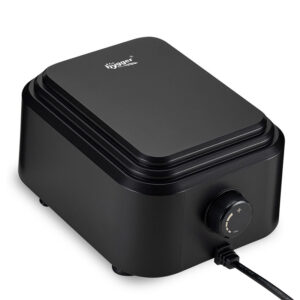
Leave a comment